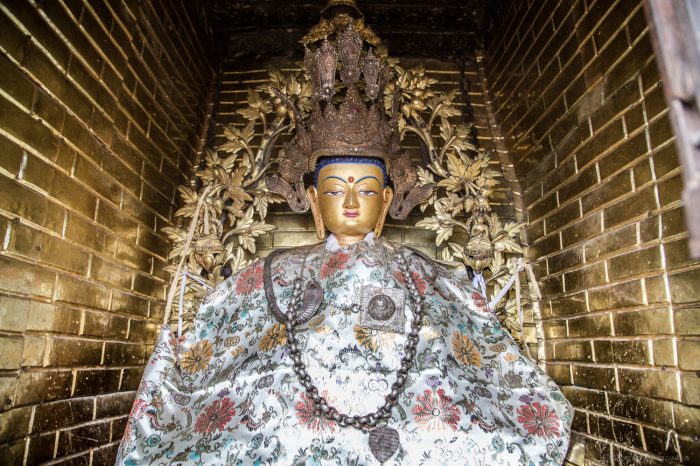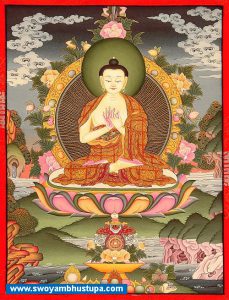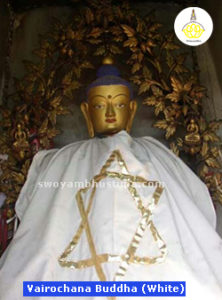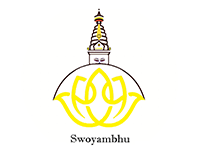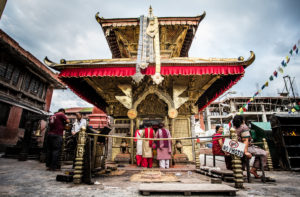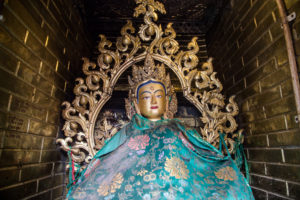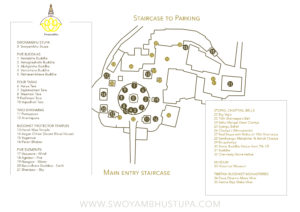Vairochana Buddha Buddha

Vajrayana introduced the theory of the five Dhyani Buddhas as embodiments of the five cosmic elements– ether, water, earth, fire and air and formulated the theory of the family of the five Dhyani Buddhas from which deities emanate according to need. The cult of the Dhyani Buddhas, who are assigned definite positions in the cosmogony of the stupa is quite popular in Nepal and may have been introduced from India as early as the 7th century A.D. The immense popularity of this cult can easily be seen and the hundreds of votive chaityas in and around the Valley. Of the five Dhyani Buddhas the senior, in Nepali hierarchy, is Vairochana (ether) who occupies the center of a Mandala but is not represented in the roadside votives which depict only the other four Dhyani Buddhas, Akshobhya (water) of the East, Ratna-Sambhava (earth) of the South, Amitabha (fire) of the West and Amoghsiddhi of the North. In the Swayambhu stupa, Vairochana is placed between Akshobhya and Ratna-Sambhava.
4. Vairochana Buddha
Vairochana Buddha is one of the Five Tathagatas symbolizing all pervasive wisdom (Suvisuddha dharma dhatu gyana) i.e. knowledge free from all kinds of obscuration. Vairocana Buddha is placed generally in the sanctum of the stupa. But Vairochana Buddha in Swoyambhu is placed between Akshobhya and Ratna Sambhava. Vairocana Buddha resides always in the Akanistha heaven that is the center of the stupa.
Vairochana Buddha is white in colour and his hands are held against his chest with the tips of thumb and forefinger of each hand joined displaying Bodhyanga mudra known as Dharmachakraparvartana Mudra. The vehicle (Aashana) of Vairochana Buddha is a lions symbolizing lions roar of Dharmadhatu gyana terrifying all wrong views. The female consort of Vairochana Buddha is Vajradhatvishwori. She is represented in the center of the Vajra Mandala as the eliminating and as powerful as Thunderbolt.
Vairochana Buddha originates from the seed syllable “Om” placed on the orb of the moon. He also represents Rupa (form) of the five aggregates.
